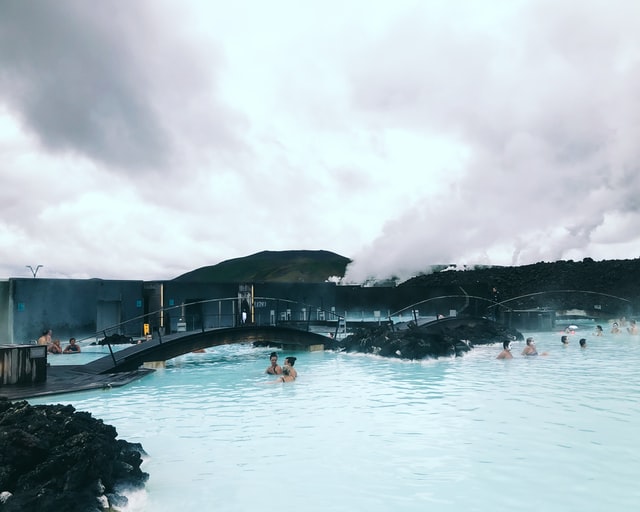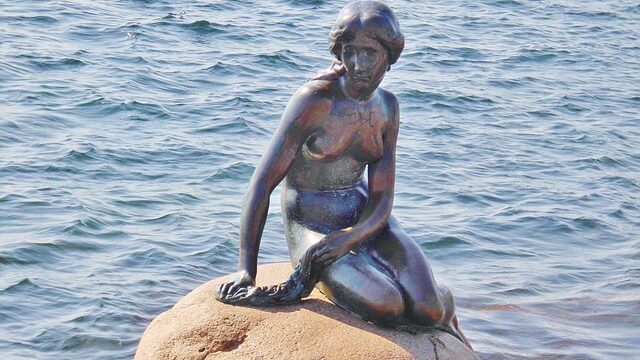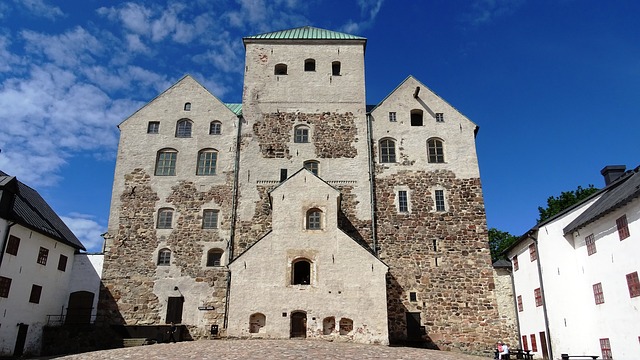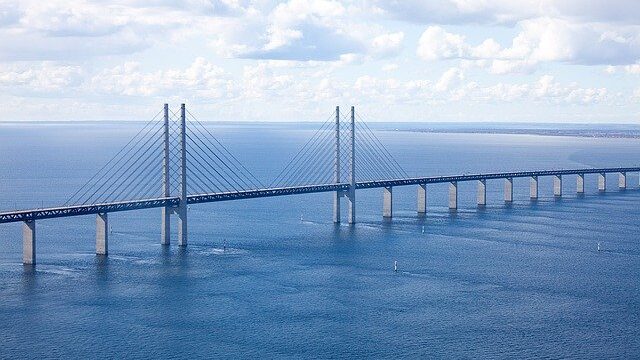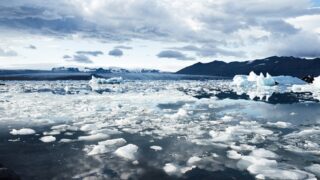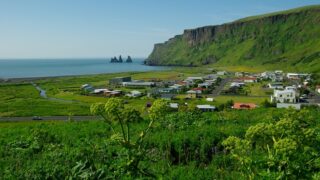Iceland, like Japan, is known for its volcanic activity. One of the benefits of volcanic activity in Iceland is its hot springs. Hot springs, where groundwater heated by geothermal energy gushes out, can be found throughout Japan, and in fact, there are many hot spring facilities in Iceland.
In particular, the Blue Lagoon is famous for being the largest hot spring in the world. In this article, I will introduce in detail what kind of hot spring the Blue Lagoon in Iceland is.
The world’s largest open-air bath, the Blue Lagoon
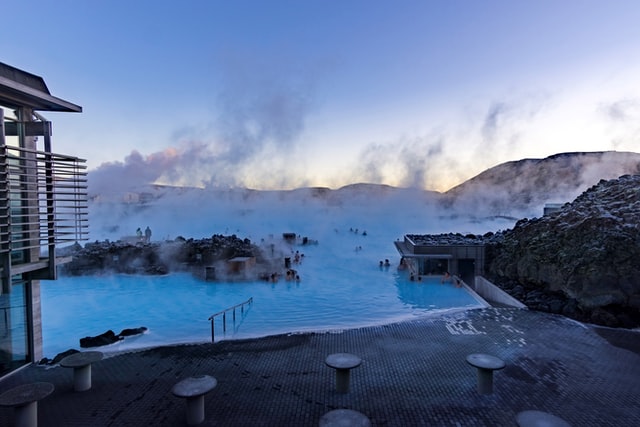
While Iceland has the image of being a land of ice, it is also one of the most volcanic countries in the world, just like Japan. Underground volcanic activity has resulted in steam and hot water bubbling up all over Iceland, and many hot spring facilities have opened at the same time.
And the Blue Lagoon, which we will cover in this article, is one of the most popular hot springs in Iceland. The Blue Lagoon is located approximately 40 km southwest of Reykjavik, the capital of Iceland. The first attraction of the Blue Lagoon is its beautiful color, which is hard to believe that it is a hot spring. The water quality is a gentle shade of blue combined with milky white from silica and sulfur.

As the name “Blue Lagoon” suggests, it is a beautiful hot spring with crystal clear blue hot spring water all around. The area of the hot spring is approximately 5,000 ㎡ and the water is 1.4 m deep at its deepest point. The water temperature is slightly lukewarm at 37°C to 40°C, making it comfortable to stay in for a long time. The outer circumference of the hot spring is made of lava, a feature typical of Iceland, a volcanic country.
The Blue Lagoon is not only one of the most popular tourist destinations in Iceland but also the largest outdoor hot spring in the world. It attracts many visitors from both domestic and international locations who come to relax or relieve their fatigue, making it a popular spot that is visited all year round.
Artificial hot spring that reuses hot water from the power plant
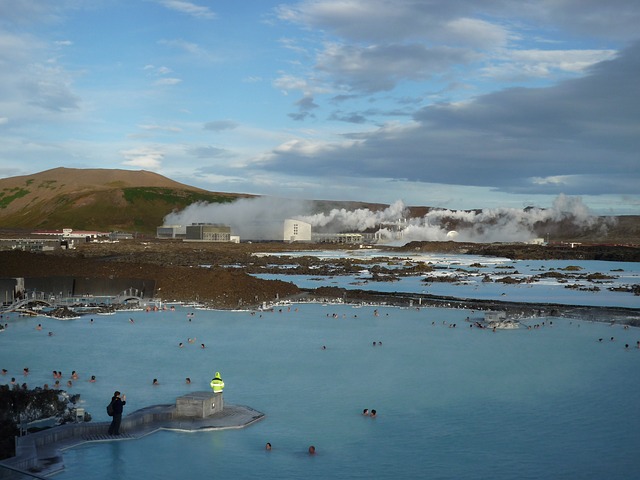
The heated water used at the Blue Lagoon is not naturally occurring hot spring water, as is the case in Japan. Instead, the water used at the Blue Lagoon is actually an artificial hot spring, created by reusing the wastewater that is used to generate electricity at the adjacent Svansuengi geothermal power plant.
The warm water in the Blue Lagoon contains a significant amount of minerals, even though it is made from groundwater and seawater heated by geothermal energy, likely due to its proximity to the ocean. In addition to the high beauty benefits of the hot springs, the mud packs that use the white silica mud found in the hot springs are also very popular. All of the white silica mud in the hot springs can be used freely, and cosmetic products with the same ingredients as the mud from the Blue Lagoon are sold in the facility.
Blue Lagoon Facilities
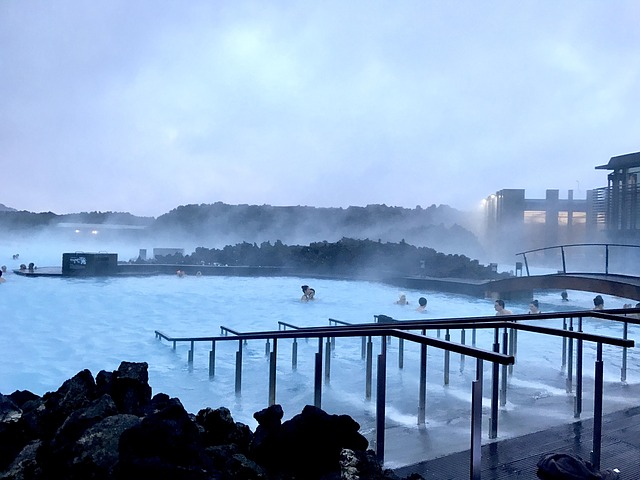
The Blue Lagoon is a comprehensive relaxation facility that features not only an outdoor hot spring but also a cafe, restaurant, and shop. Keep in mind that advance reservations are required for the Blue Lagoon, and they must be made online.
After check-in, you will receive a wristband embedded with a magnetic chip, which you can use to make payments throughout the facility. This means you don’t need to carry cash. When you make purchases, your transaction history is stored on the wristband, and the full amount is settled when you check out of the facility.
The rule is to always wash your body in the shower before bathing in a hot spring.
Bathing requires the wearing of a bathing suit. Basically, you need to bring your own swimsuit, but if you forget it, you can rent one at the facility.
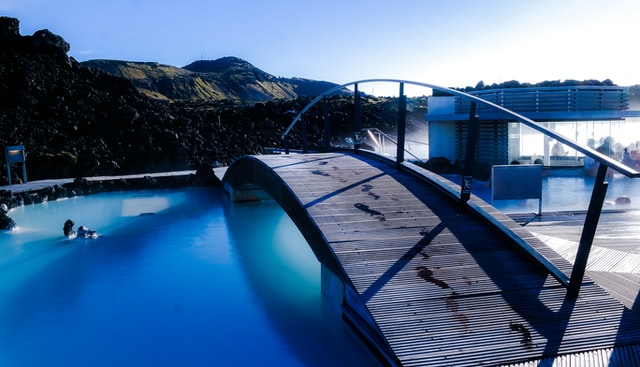
The Blue Lagoon is more akin to a heated pool than an open-air bath, allowing visitors to swim and enjoy the hot springs. In addition to the hot springs, the 5,000 square meter facility includes saunas, caves, and a bar where visitors can enjoy a drink.
The bar inside the Blue Lagoon features a unique style where you can order drinks while half-immersed in the hot water. It’s a scene not often seen in Japan to drink alcohol while soaking in a hot spring. After warming up in the hot spring, you can also get a massage or have a meal at the restaurant within the facility.
With its diverse range of facilities in addition to the hot springs, the Blue Lagoon offers so much that you could easily spend an entire day there without getting bored.
How the Blue Lagoon was born
Let’s take a look at the history of the Blue Lagoon and how it came to be.
The Blue Lagoon is now a very popular spa facility, but its original form was a pond created by the accidental accumulation of wastewater from the Svansuengi geothermal power plant. As a volcanic country, Iceland has geothermal power plants built all over the country, and the Svansuengi geothermal power plant was constructed in 1976 as one of them.
The Svansuengi geothermal power plant generates electricity by using steam that rises from 2,000 meters below the ground to turn a turbine. The heat from the steam is also used to warm fresh water that is prepared separately and then delivered to homes as hot water for heating. Finally, the steam that rises from underground is cooled down and discharged outside as hot water.
Normally, the ground would absorb the wastewater, but the hot water generated at the Svansuengi geothermal power plant contained a large amount of silica. As silica has the property of hardening when cooled, the silica-laden hot water solidified before it could seep into the surrounding ground, creating small ponds.
The turning point in the creation of the Blue Lagoon came in 1981 when a man named Valur Margeirsson, who suffered from psoriasis, a skin disease, took a bath in a pond created by wastewater. People around him stopped him from entering the pond, not knowing what ingredients it contained. However, when Valur took a bath, his skin disease was remarkably improved. Later, the efficacy of the warm water for skin diseases became widely known to the public.
Thus, a small pond created by wastewater from the power plant was opened as a spa facility in 1987 under the name “Blue Lagoon.”
Conclusion
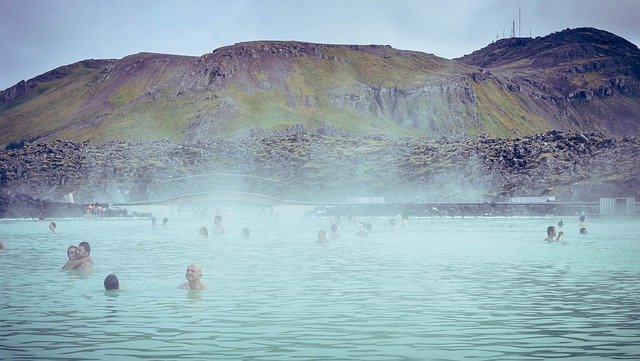
The Blue Lagoon in Iceland is the world’s largest outdoor hot spring, and as its name suggests, the water has a milky blue hue that is very attractive. It is also an eco-friendly artificial hot spring that recycles wastewater from a nearby power plant. Moreover, it is a complex facility that includes silica mud packs, massages, cafes, and bars, making it an enjoyable place to spend the whole day.
The Blue Lagoon is located 40 km from the capital city of Reykjavik and takes approximately 30 minutes by car. It is only 20 minutes away from the nearest airport, Keplavík. Additionally, there is a shuttle bus service directly from Reykjavik, so be sure to visit the Blue Lagoon during your trip to Iceland.
